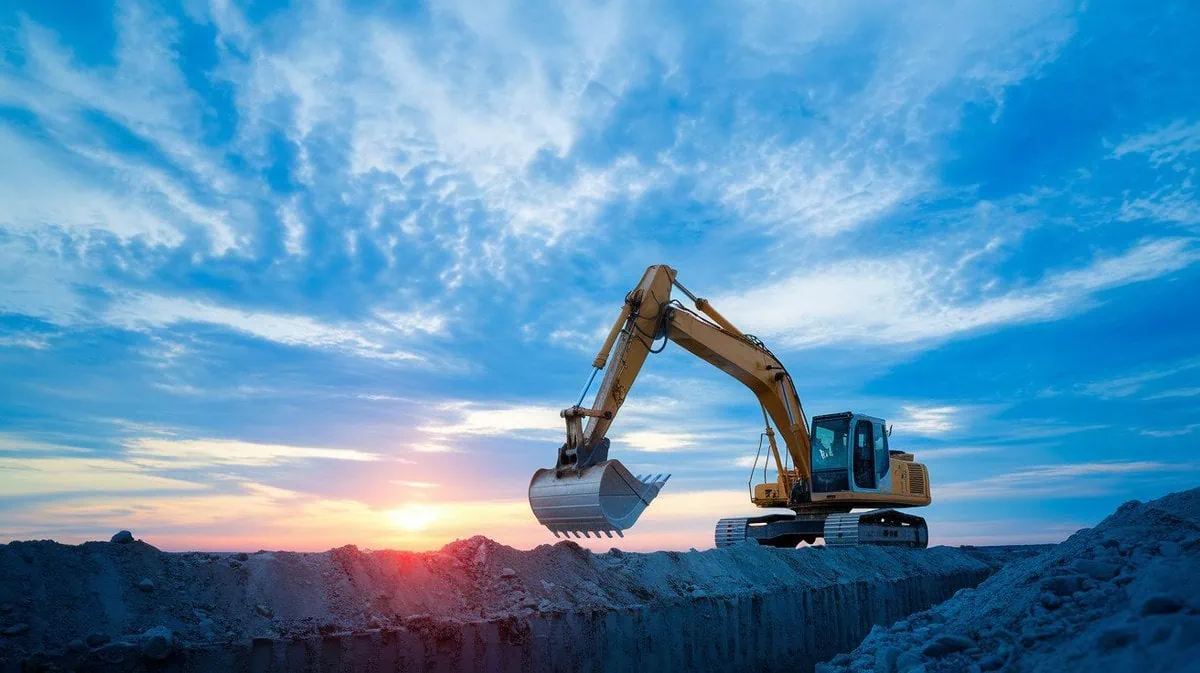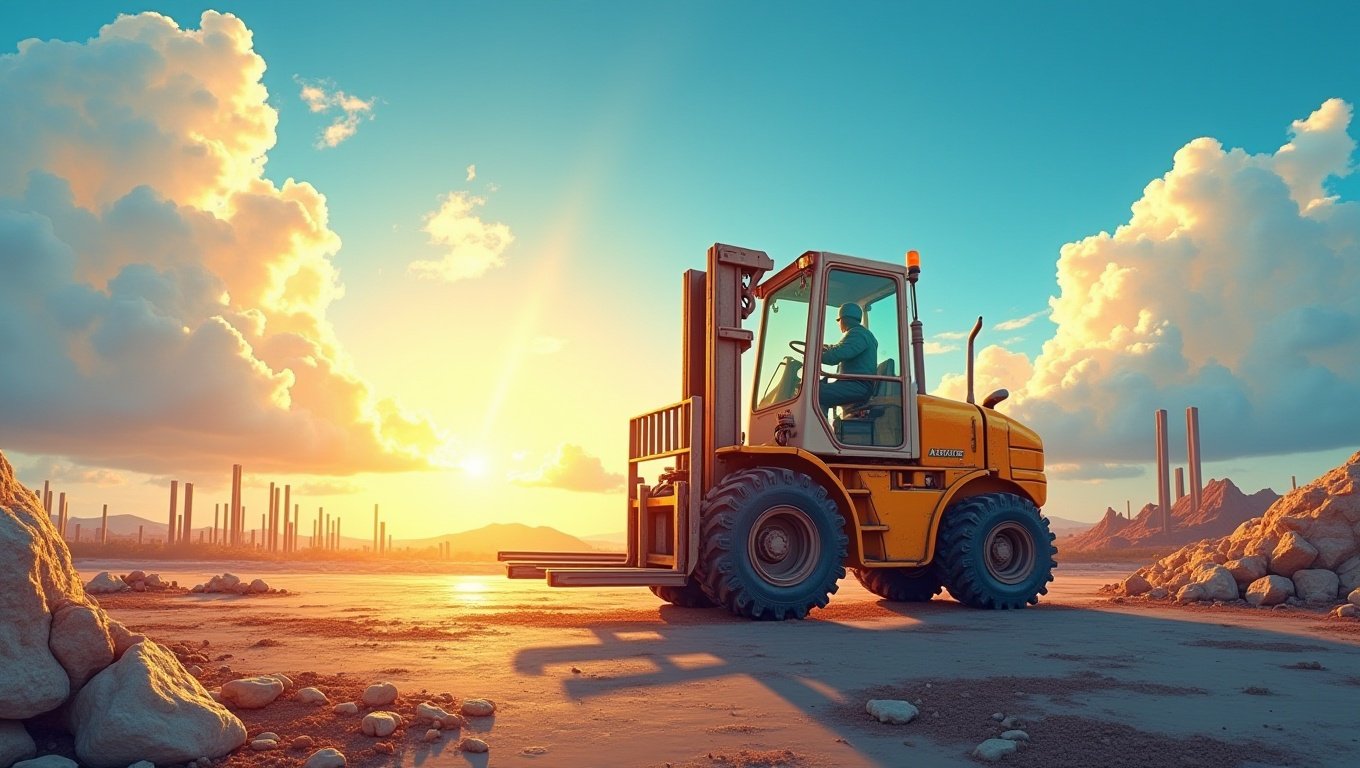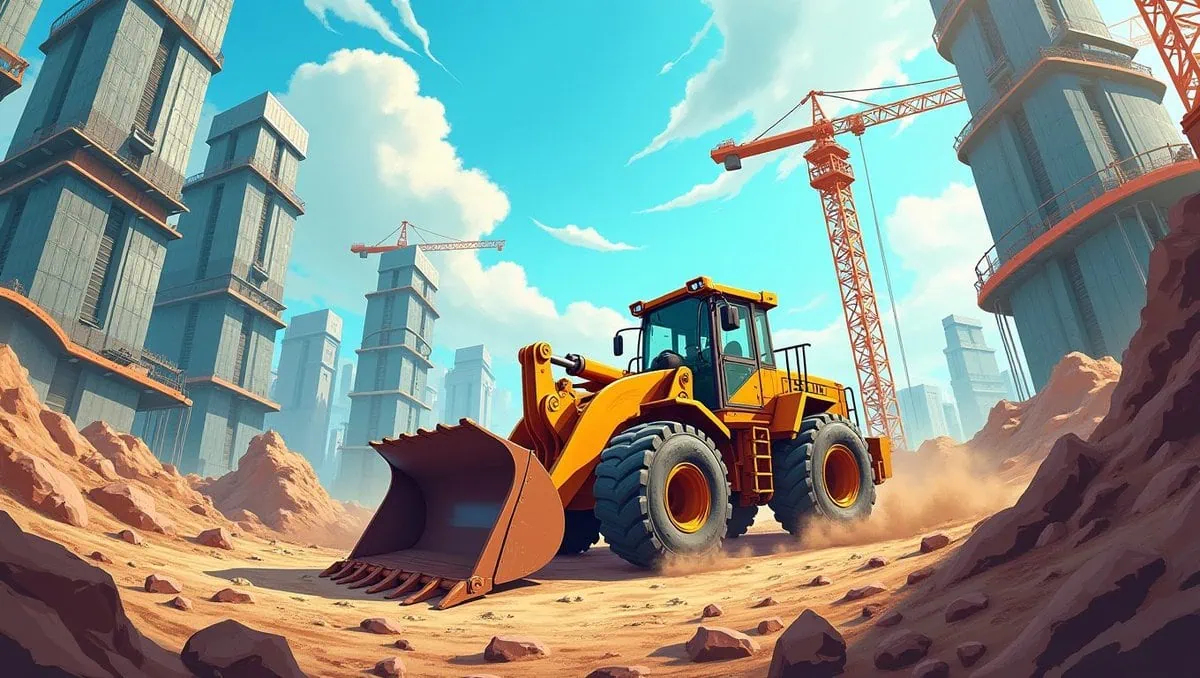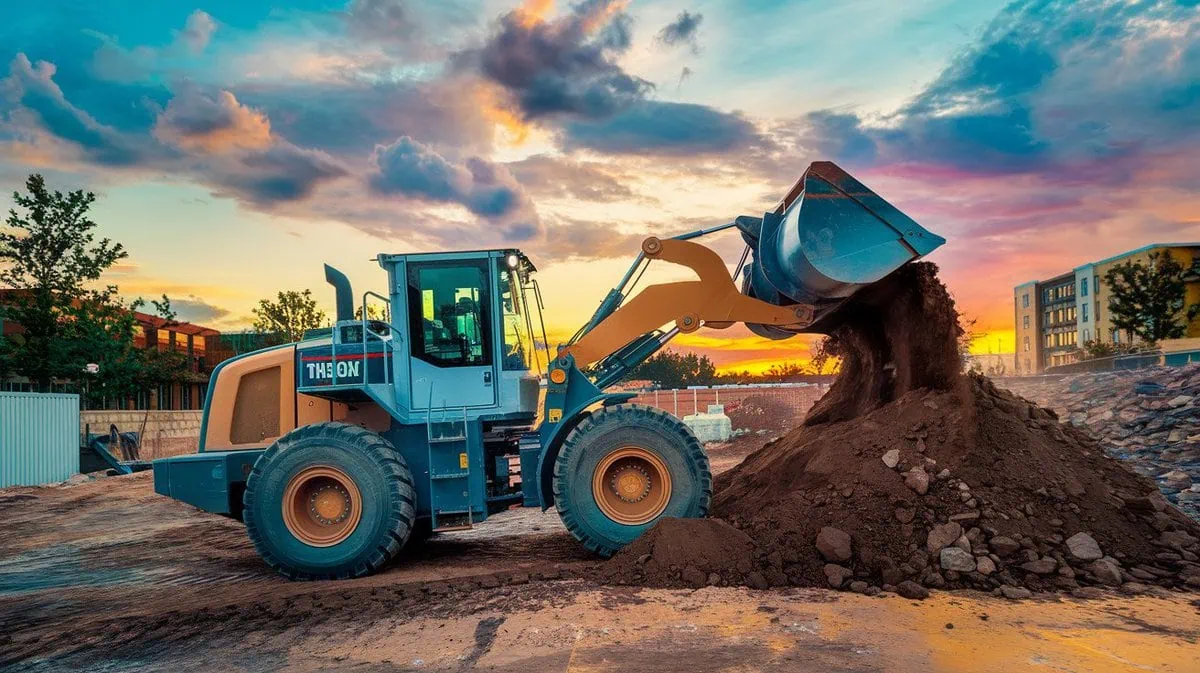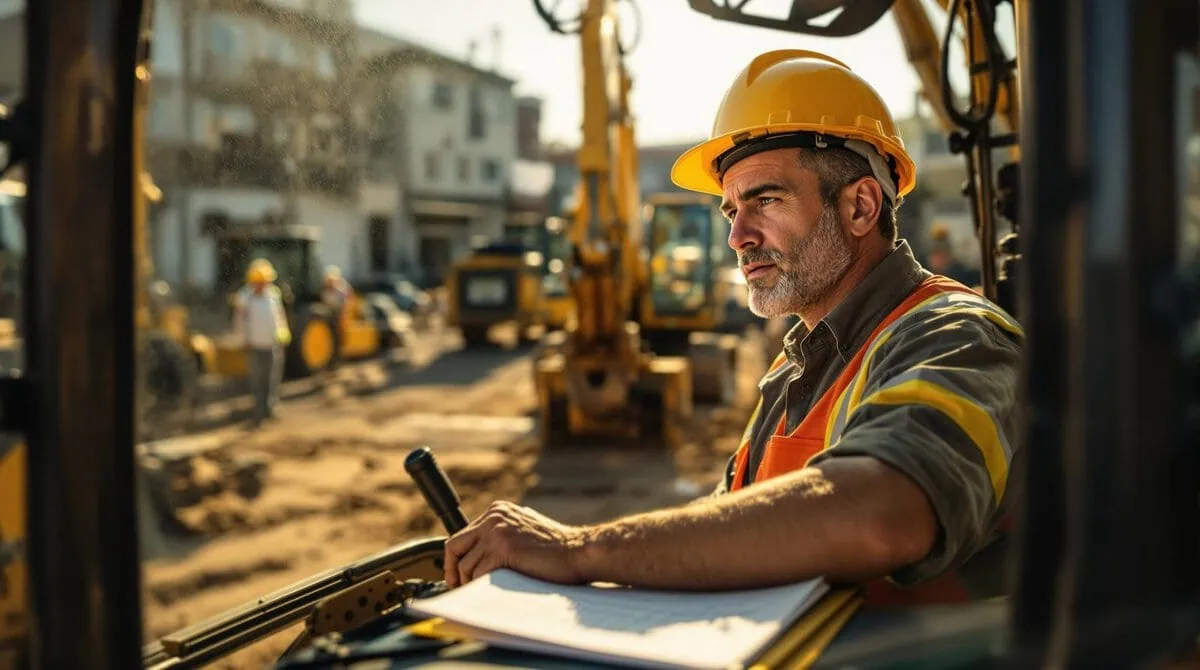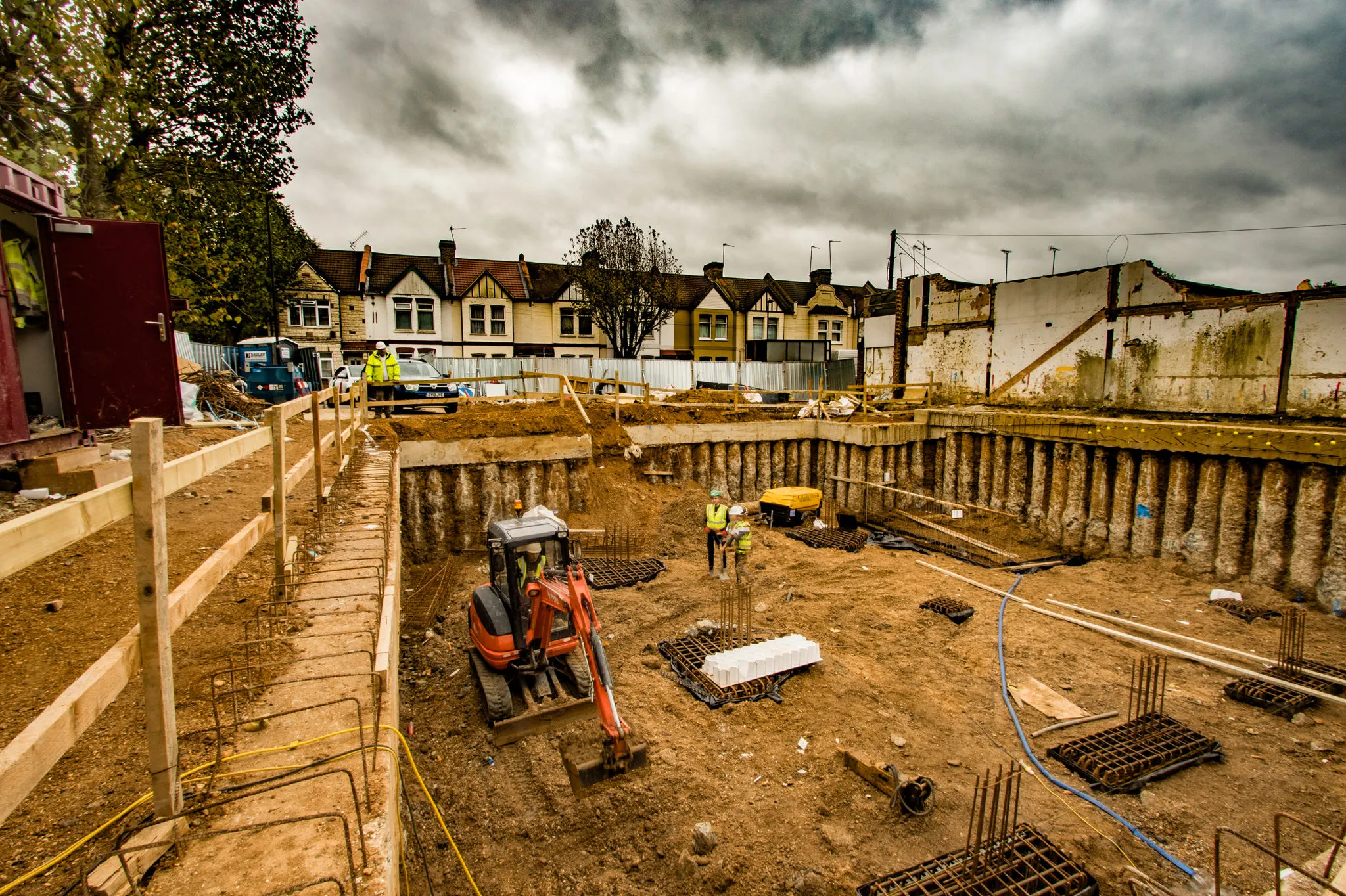Shielding excavation is a big deal for deep trenching and deep digging, especially for workplace safety. If you need to, buy an excavator that pays for itself in work done in less time, meanwhile reducing your own risk in both health and safety as well as on the job risks to all your equipment in the field.
When purchasing an excavator for shielding excavation, it is important to focus on factors like stability, digging depth, and safety features. Make sure the equipment meets industry standards to minimize hazards. Pay attention to arm length, bucket size, and hydraulic power, ensuring the machine meets your operational needs and site-specific requirements.
Next, we will explore the key elements to consider when purchasing an excavator for shielding excavation work. These factors will help ensure safety and operational efficiency in your project.
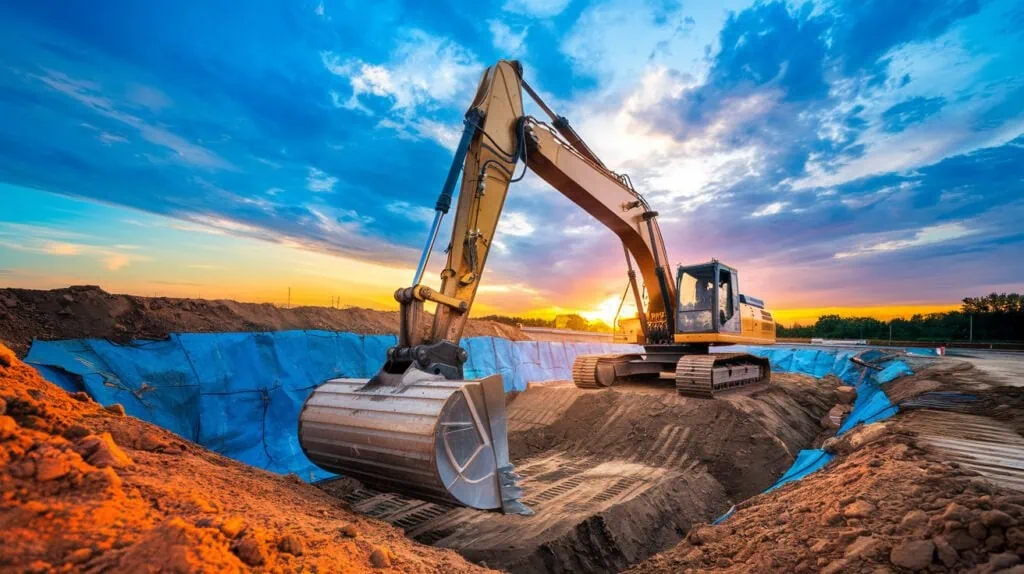
1,What is Shielding Excavation?
Shielding excavation is a way to be safe when going deep in a trench, or just deep digging. It is a set of standards of how to do deep digging, trench work to keep your workers safe, and to have a workplace that is safe and secure to work in. It is a huge portion of most construction projects, especially when working in areas of soil that may not be rock solid.
Shielding excavation often requires forms of support in the form of shoring boxes, trench boxes, or other pseudo temporary braces while you do your deep digging. Knowing the requirements of these systems can help you know which is the right excavator for you to be using for your project and the risk mitigation in using these systems.
In shielding excavation, having the proper support is key. Nothing is more dangerous than a deep dig without the proper protective measures in place. You need an excavator that gives you the options to install and then run that protection like shoring boxes. An excavator that can quickly adjust to fit the support systems in place is perfect for the tasks of shielding excavation.
| Support Structure | Purpose | Common Equipment |
| Shoring Boxes | Prevents soil collapse | Excavator with appropriate lifting capacity |
| Cajas de trinchera | Provides safe working space | Excavator with adjustable arms |
| Hydraulic Props | Adds extra stability | Excavator with strong hydraulics |
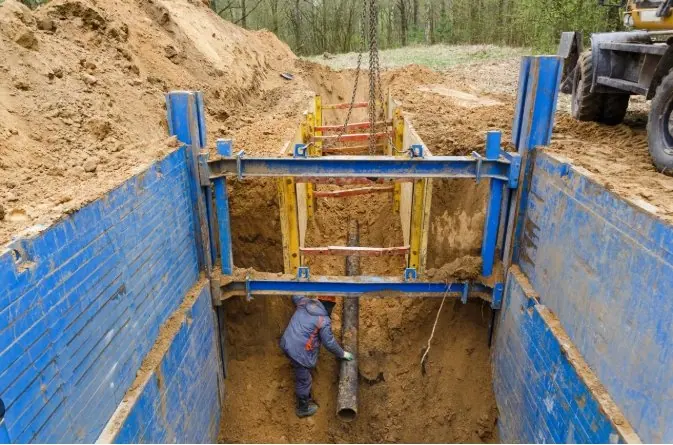
2,Why Stability and Digging Depth Are Crucial for Shielding Excavation?
In shielding excavation, the stability of the machine and the maximum depth you can dig are key elements to help you be safer and operate efficiently. These two factors control the machine’s ability to perform quickly and efficiently under the challenging conditions of deep trench work.
If the excavator is more stable and can dig deeper, it provides better support and control while shielding excavating. This means it is less likely you will have an accident, which makes your job safer and more productive out in the field when you are shield excavating.
When selecting an excavator for shielding excavation, you need to think about the weight of the machine and the design of the tracks and the hydraulic system. Stability is the key when you start working in deep, dead, or other challenging soil conditions. You have to have a stable machine so you don’t tip over while you are digging, which would cause an issue for you underwater. You need a machine that can dig deeper so that you can use it more effectively for your shoring boxes, which, in turn, allows you to keep your excavation workers safe while they are working.
| Factor | Effect on Shielding Excavation |
| Stability | Prevents tipping and ensures safe operation |
| Profundidad máxima de excavación | Enables deep trench work without risk of collapse |
| Track Design | Ensures balance on uneven terrain |
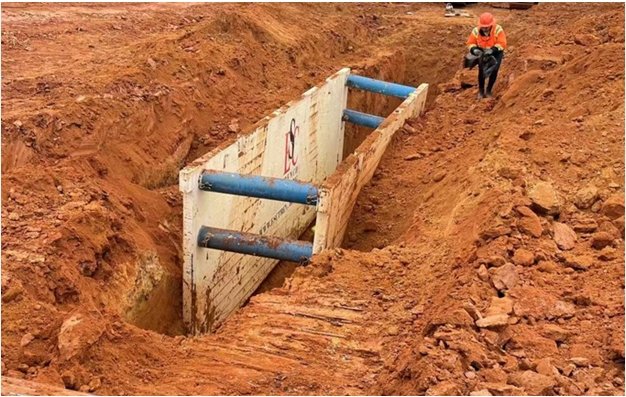
3,Safety Features to Consider When Choosing an Excavator for Shielding Excavation
Safety features are critical when it comes to an excavator for not tipping, not being unstable, and not killing somebody when you bury him alive. With the safety systems, your excavator is a safer place for you to work in high-risk excavation areas.
Make sure the excavator comes with an anti-tip system. Make sure the excavator comes with an automatic leveling device built into the machine because your excavator probably won’t level itself off very well. Make sure the excavator has the safety platforms to make your operation smooth and safe.
In shielding excavation, safety is the key. You want an excavator with safety features like anti-rollover technology, automatic leveling, and vibration control to help create a safe working environment. These systems will help protect your crew while keeping the excavator stable when you are working on uneven ground, climbing a hill, or trying to lift something awkward. Additionally, these machines come with guardrails, emergency stop systems, and audible signals to let people know when a change is happening with the operation.
| Safety Feature | Function |
| Anti-Tip Systems | Prevents machine from tipping during deep excavation |
| Automatic Leveling Devices | Ensures machine stays level on uneven terrain |
| Vibration Control | Reduces risk of instability and equipment damage |
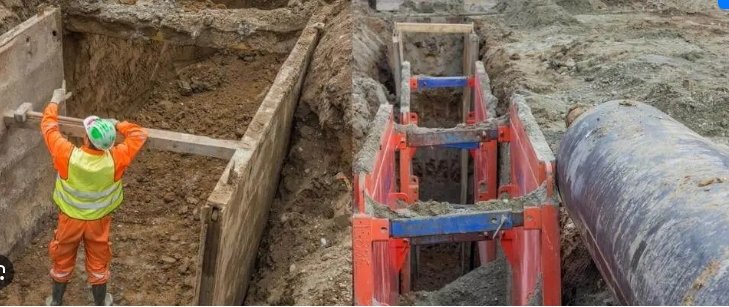
4,How to Choose the Right Excavator Model Based on Project Needs?
Selecting the perfect excavator for shielding excavation involves understanding both the machine and size and the demands of your project. Your project size, environmental issues, and soil conditions will help you choose the right machine.
When you choose an excavator for shielding excavation, make sure the model of your choice has a hydraulic arm that’s long enough to reach the bottom of the trench and the things you need to move. Make sure the bucket is large enough to move the material you need to move, and that it has the hydraulic power to work the extra length and size of the bucket.
The best model of excavator to use for shielding excavation depends on things like how deep of a trench you are digging, what type of soil you’re working in, and how extensive the trenching job you’re doing. Deeper trenching requires more arm, a bigger bucket, and a more powerful hydraulic system because the deeper you go, the more that dirt weighs when you have to lift it. If you have to dig in a narrow space or have to access areas with limited room for moving around, then you might want to use a smaller, more compact excavator that can turn a little sharper.
In the big scheme of things, the difference between success and failure of shielding excavation might be the selection of the correct excavator with arms that raise, lower, and pivot.
| Key Factor | Considerations for Shielding Excavation |
| Arm Length | Ensures effective reach for deep excavation |
| Bucket Size | Should be proportional to the material volume being handled |
| Hydraulic Power | Determines how heavy the loads the excavator can lift |
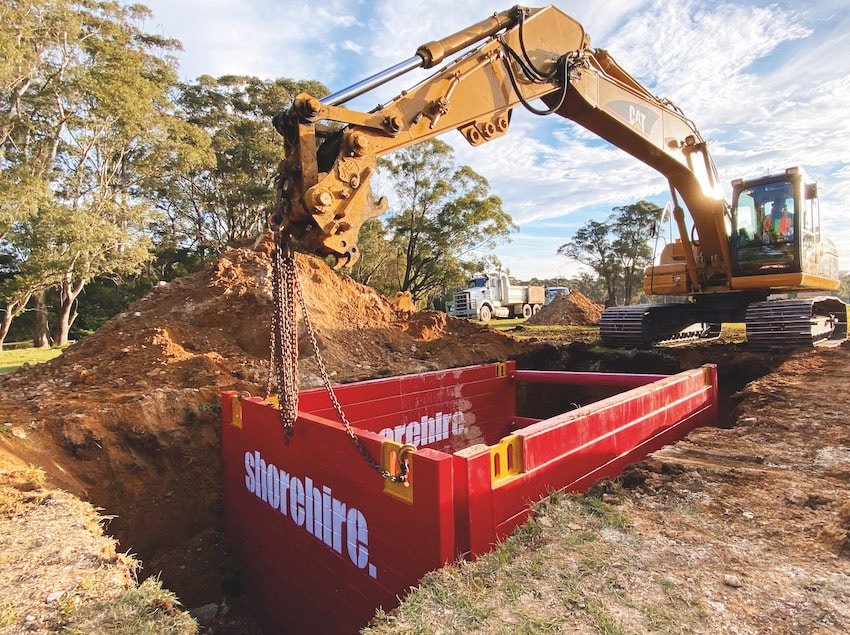
5,Other Factors to Consider When Purchasing an Excavator for Shielding Excavation
Finally, when you’re looking to buy an excavator for shielding excavation, there are a few other things to keep in mind besides the technical specs. You also want to make sure you understand the availability of after-sales service, the cost of the maintenance, and the long-term durability of the machine you want to purchase.
Choose a supplier that offers excellent after-sales service and warranty options. You also need to look at how easy the excavator is to service and how readily available its spare parts are so that you can keep the machine up and running.
For the budget-conscious contractor, the capacity to dig makes the biggest difference in your excavator’s effectiveness. If you are fortunate enough to afford the machine with a lot of fancy features like automatic leveling, safety ratings in place to prevent tip-overs, a vibration control system, guardrails, emergency stops, and signaling systems, then have at it. The more of those features you have, the less likely you are to damage the machine or have your workers get injured because Uncle Harry backed up on a Friday afternoon when they were digging the trench, figuring they could get out early.
| Consideration | Importance for Shielding Excavation |
| Servicio postventa | Ensures support and quick repairs |
| Spare Parts Availability | Minimizes downtime and operational costs |
| Warranty | Protects your investment over time |
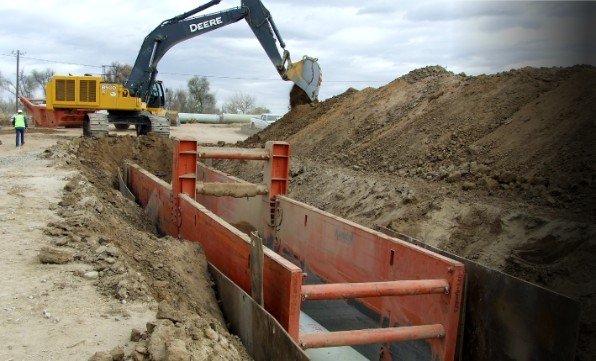
6,What is the Difference Between Shielding and Shoring?
Shoring is the bracing or jack system positioned on the side of a trench to prevent soil wall collapse. (Shields are portable steel containers used in trenches to prevent cave-ins.)
Shielding refers to structures like trench boxes that protect workers, while shoring is used to keep the hole you excavate open and safe. Understanding the difference can help you to know what type of method to use.
While both occurrences play a vital role in preventing accidents during excavation, you will see, and use, shielding more when there is a high risk of soil collapse. Shoring, on the other hand, will help add some extra support to the walls of the excavation to keep them from falling in. You can use both situations in conjunction with your excavator to make sure the site is safe for all workers, especially when you are doing deep trench work. Which one you use depends on the soil type, depth, and the risks associated with the job at hand.
| Method | Use in Shielding Excavation |
| Shielding | Protects workers from soil collapse |
| Puntales | Provides extra structural support |
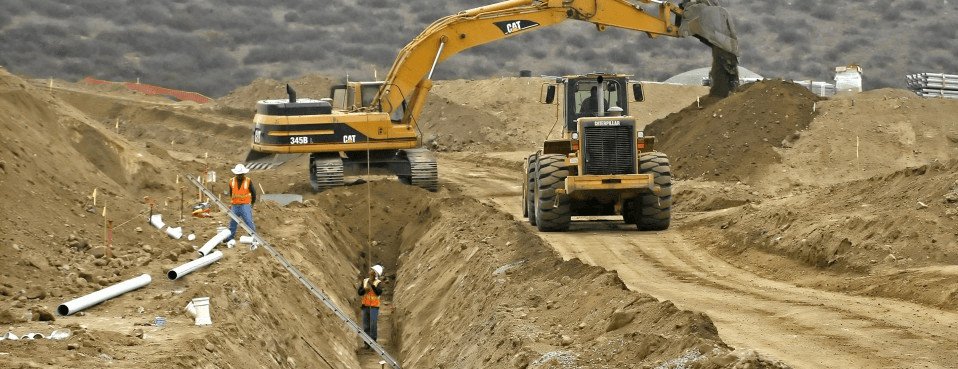
7,What is Excavation Protection?
A trench is any manmade depression in the earth’s surface. It is created by digging out dirt and rocks with some kind of equipment to top soil. A trench can be shallow or deep, short or long, and it can vary in width. In other words, a trench is a hole in the ground.
Excavation protection is a group of safety procedures used to protect against accidents and injuries caused by digging in the earth. This group includes shielding (versus shoring).
In deep trench work, protecting your workers from a tragedy means deciding whether to shield a trench to provide a safe workspace for your workers or to shore up the trench to add temporary support to the walls to keep it from caving in while your people work inside. These two methods can also be used with an excavator to increase the safety of your site. Whether to shield a trench o shore up a trench depends on the type of dirt you are digging in, how deep your excavation is, and what other hazards are involved with your job.
Knowing the difference between trench shielding y trench shoring is crucial in deciding which method to use for your excavation.
| Protection Method | Purpose |
| Shielding | Protects workers from soil collapse |
| Monitoring Systems | Ensures site remains stable and secure |
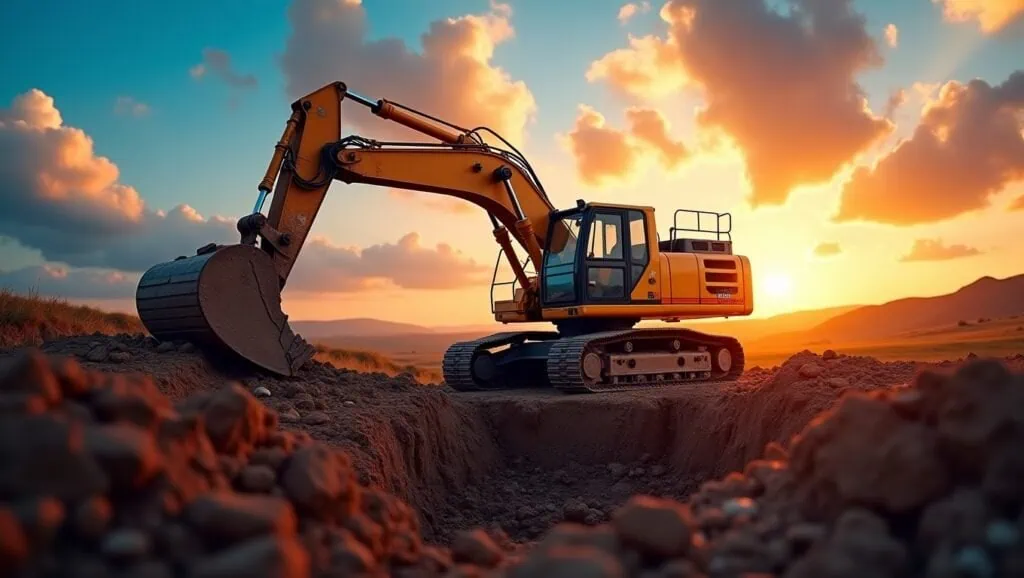
8,What is Excavation Shoring?
Shoring is nothing more than temporary support, preventing the walls of your trench from caving in while your people are in the hole.
The use of shoring is crucial, especially for stabilizing the sides of an excavation in areas with unstable soil conditions. You’ll also need equipment capable of handling the heavy lifting associated with shoring systems.
Shoring systems are designed to offer structural support during excavation projects. You must have either strong-armed excavators or excavators with delicate hydraulic movements to handle the shoring systems safely. The choice between hydraulic shoring systems or mechanical shoring systems will depend on the size and depth of the excavation. In shielded excavations, shoring systems work hand-in-hand with protection systems to keep the excavation site structurally sound.
| Shoring Type | Purpose |
| Hydraulic Shoring | Provides adjustable support |
| Mechanical Shoring | Provides strong, rigid support |
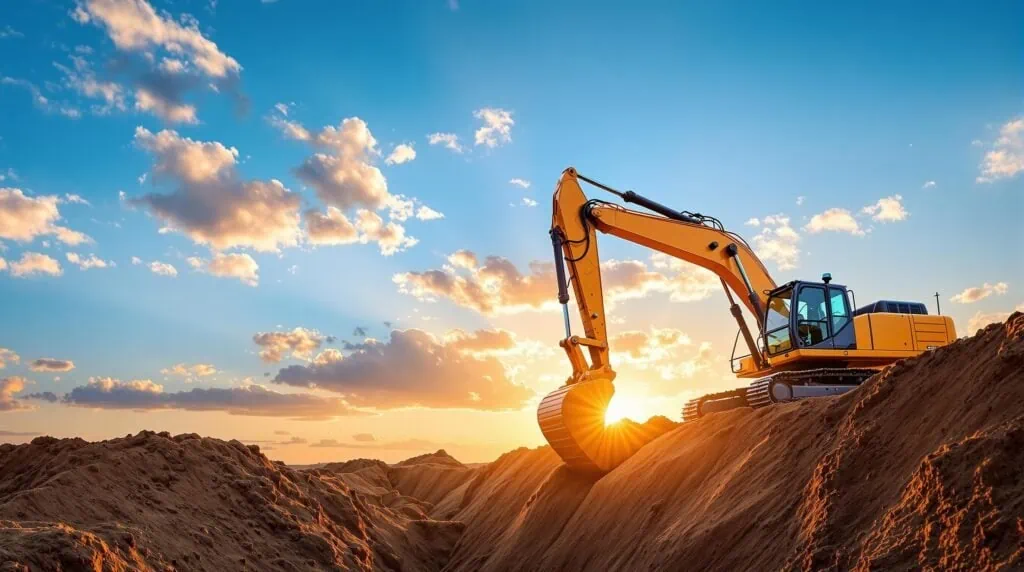
9,How to Ensure the Right Excavator for Shielding Excavation Meets Project Specifications?
When selecting an excavator for a shielded excavation, it is crucial to match the machine’s specifications to the project specifications required to bury the excavation box, the soil conditions, and any other safety features required for the project.
Make sure that the excavator’s specifications, such as reach, hydraulic capacity, stability, are matched to the specific need of the shielding excavation project. This means understanding the soil conditions, the depth of the excavation, and the lift capacity required for the support systems.
No, excavators are not one-size-fits-all, especially for tasks like shielded excavation. What you’re digging and how deep you have to bury the shield box and the ground come into play when choosing the right machine. You want to make sure you get a dependable machine with hydraulic adjustments that can adjust to changes in project needs. Also, get a machine that matches the specifications for what you need to do, whether it’s the maximum digging depth or how much it can hold in case you overload the machine. These decisions prevent machine failure during operations.
| Excavator Specification | Use Case |
| Adjustable Arm Length | Deeper or more complex excavations |
| High Hydraulic Power | Projects requiring significant lifting power |
| Strong Stability Systems | Excavations in loose or unstable soils |
10,The Role of Excavator Attachments in Shielding Excavation
Attachments for excavators are vital for completing shielded excavation projects safely and effectively. Selecting the proper attachments for digging, lifting, and stabilizing the excavation site ensures a successful project.
A hydraulic hammer, an auger, and a grapple are the big three attachments that can make the excavator operators more effective during shielded excavation. If you get the right attachments, you can get the dirt out of the ground faster, stabilize the excavations, and install the shielding that much quicker, creating a safe work environment.
Shielding excavation often requires the careful material handling and installation of protective support. That’s where the attachments come in. Whether you need to break through hard dirt, lift heavy support materials, or secure the excavation work site, the attachment makes the task easier. For example, the hydraulic hammer can break through rock or compacted soil. The grapple can help lift and place heavy material to support the excavation. When you add these attachments to your shielding excavation operation, then you can bet your machine can handle everything you’re about to do on-site.
| Attachment Type | Purpose |
| Hydraulic Breaker | Breaking rock or tough soil |
| Grapple | Lifting and placing heavy materials |
| Barrena | Drilling holes for anchors or foundations |
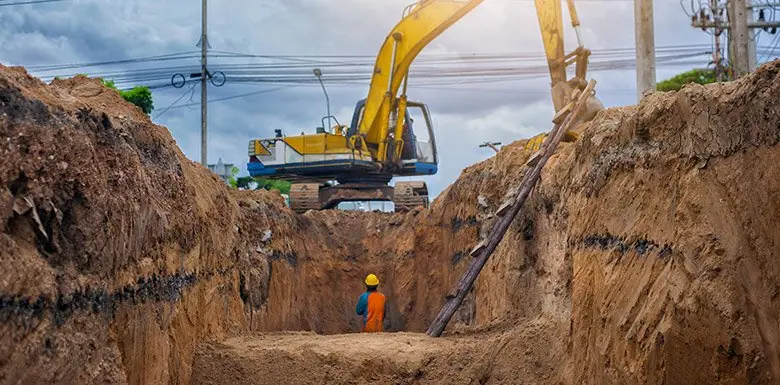
Summary:
Some considerations when selecting an excavator for shielded excavation include:
Machine Stability – This is critical. What’s the dirt doing? How stable is it? How deep are we going to have to dig?
Digging Depth – Can your excavator reach the depth you need?
Safety – Does the machine have the extra safety features to keep you out of trouble and protect you in case of a hydraulic failure?
After-Sale Support – The most important part of a piece of equipment you buy isn’t the machine itself. It’s the backup and the support you get after you put it in service. The best machine in the world doesn’t work if no one can help you keep it running correctly.
Also,if you want to know more information about:shoring and excavation,what is excavation shoring,shielding in excavation,shoring or shielding is most often used when,excavation shielding,excavation shielding vs shoring,shoring vs shielding,shoring and shielding,benching excavation,sloping excavation,excavation shoring systems,excavation shoring requirements, please feel free to Contacto con nosotros!
When shopping for secondhand excavators, consumers looking for dependable and affordable construction equipment would be wise to choose Shandong Hixen Machinery Co.,Ltd.
Before selling a secondhand excavator, Hixen inspects it and ensures all its parts work. This extensive testing helps ensure that clients get a machine that will function properly and reliably on the job.
In addition, Our company provides high quality used excavators at competitive prices, making them accessible even to firms operating on a shoestring. Customers may save money without sacrificing quality by going with us.

